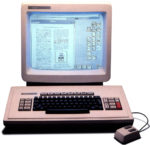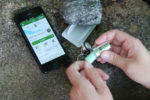A new form of lighting is used for the first time, the first Spam e-mail is sent and the public’s use of GPS technology gets a major boost. It all happened This Week in Tech History.
1879 – Electric arc lights were used for the first time — in Cleveland, OH. These lights were actually very dangerous, as they produced harmful UV rays, carbon monoxide and were a major fire hazard. Many theaters that used them burned down as a result of excessive heat or sparks from the lights. Also, the exposed lamp could easily burn or electrocute technicians. They were eventually replaced by mercury vapor, sodium and fluorescent lights.

1937 – The first animated electric sign was displayed on a building on Broadway in New York City. The sign consisted of several thousand light bulbs and presented a four-minute show that featured a cavorting horse and ball-tossing cats. While unfortunately, photos of the original sign have been lost to posterity, we do have images of other well-known signs by the same designer, Douglas Leigh, who also designed the original lighting scheme for the Empire State Building.
1964 – TV sets would be drastically different after a ruling by the FCC stating that all TV receivers must be equipped to receive both “Very High Frequency” channels (2-13) and the new “Ultra High Frequency” channels (channels 14-83). As a result, TV dealers scrambled to unload their VHF-only models as fast as possible. Antenna manufacturers were kept busy, as the new UHF receivers required new antennas too.
In 1978, the very first unsolicited bulk commercial e-mail was sent by a Digital Equipment Corporation marketing executive to every ARPANET address on the west coast of the US to promote their mainframe computer system. The reaction to the message was not surprisingly negative. Unsolicited e-mail was first referred to as “Spam” in 1993 and today, over 14 and a half billion Spam messages are sent out every day.
1981 – Xerox introduced the Star workstation. officially named Xerox 8010 Information System, it was the first commercial system to integrate several technologies that eventually became standard on personal computers. These technologies included a two-button mouse, ethernet networking, file and print servers and e-mail. These workstations were just one part of the larger Xerox Information system, with a starting price of over $16,000 – equivalent to over $45,000 today.
2000 – President Bill Clinton announced that accurate GPS access would be made available for public use, and no longer limited to the US Military. Giving rise to a whole new industry. That also opened the door to a brand new recreational activity that began the very next day – Geocaching – where participants use GPS coordinates to hide and seek containers, called geocaches, all over the world. Today, there are more than 3 million geocaches in in over 190 countries.






